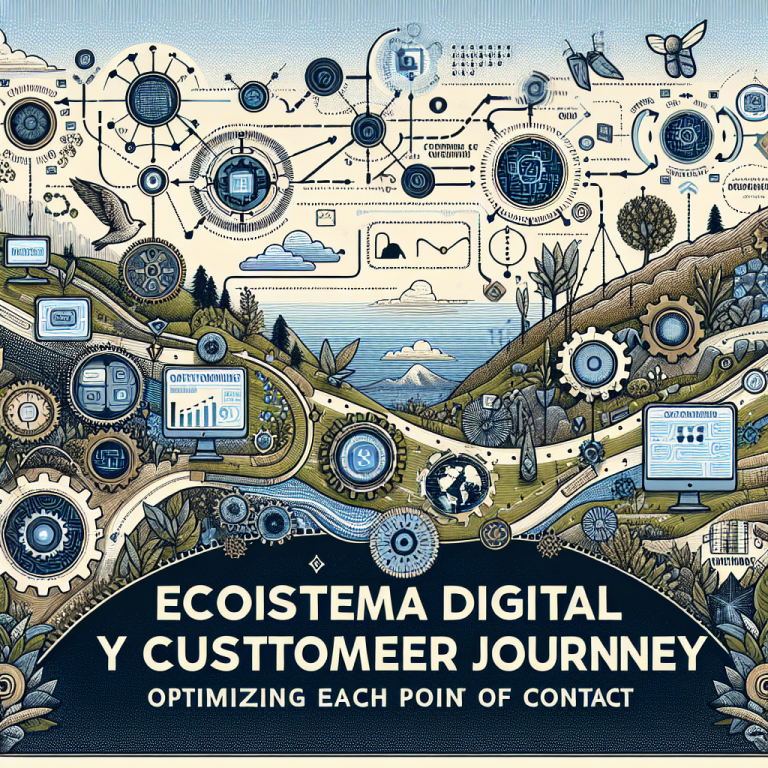
The world has witnessed a remarkable digital revolution over the past few decades. With advancements in technology, businesses have realized the importance of establishing a strong digital presence to reach their target audience effectively. Implementing a digital ecosystem for your brand is crucial in today’s competitive market, and in this article, we will explore the best practices to achieve this feat.
Implementing a digital ecosystem involves integrating various digital platforms and channels to create a cohesive and seamless experience for customers. It allows brands to engage with their audience across multiple touchpoints, including websites, social media, mobile apps, and more. By embracing a comprehensive digital strategy, brands can enhance their visibility, increase customer loyalty, and drive sales.
One of the first steps to implementing a successful digital ecosystem is to set clear objectives. What do you want to achieve through your digital presence? Whether it’s increasing brand awareness, generating leads, or driving conversions, defining your goals will help shape your digital strategy. This clarity will guide you in selecting the most relevant platforms and tools to reach your target audience effectively.
Another critical aspect of implementing a digital ecosystem is to ensure consistency in branding across all platforms. Your brand’s visual identity, including logos, colors, and typography, should be consistent across your website, social media profiles, and other digital assets. This consistency builds trust and helps customers recognize and engage with your brand easily.
To establish a strong digital presence, it is imperative to optimize your website and other digital platforms for search engines. Search engine optimization (SEO) involves various techniques to improve your website’s visibility on search engine results pages. By conducting keyword research, optimizing your website’s structure, and creating high-quality content, you can rank higher in search engine rankings and attract organic traffic to your website.
Social media has become an integral part of our daily lives, and it plays a crucial role in implementing a successful digital ecosystem. Identify the social media platforms where your target audience is most active and create compelling content to engage with them. Regularly monitor your social media profiles, respond to customer queries and feedback promptly, and leverage paid advertising to reach a wider audience.
In addition to creating a strong digital presence, brands should focus on delivering personalized experiences to their customers. Utilize customer data to understand their preferences, behavior, and purchase history. By leveraging this data, you can create personalized marketing campaigns, recommend relevant products, and deliver a more tailored experience across all digital touchpoints.
Building an ecommerce platform is another essential aspect of implementing a comprehensive digital ecosystem. Nowadays, customers expect the convenience of shopping online, and brands need to accommodate this demand. Develop a user-friendly ecommerce website, optimize the checkout process, and provide secure payment options to create a seamless shopping experience.
Finally, regularly analyzing and measuring the performance of your digital ecosystem is crucial for optimizing your strategy. Utilize web analytics tools to track website traffic, conversion rates, and other key performance indicators. By analyzing this data, you can identify areas of improvement, make data-driven decisions, and continuously enhance your digital presence.
FAQs
1. What are the benefits of implementing a digital ecosystem for my brand?
Implementing a digital ecosystem allows your brand to reach a wider audience, increase customer engagement and loyalty, and drive sales. It also provides valuable customer data for personalized marketing campaigns and enables you to stay ahead of your competition.
2. How can I ensure consistency in my brand’s visual identity across different digital platforms?
Create brand guidelines that outline your brand’s visual identity, including logos, colors, fonts, and imagery. Ensure that these guidelines are followed consistently across your website, social media profiles, and other digital assets.
3. How important is SEO for my website’s visibility?
SEO is crucial for improving your website’s visibility on search engine results pages. By implementing SEO techniques, you can attract organic traffic to your website and increase your chances of appearing on the first page of search results.
4. How can I leverage customer data to deliver personalized experiences?
By analyzing customer data, such as preferences, behavior, and purchase history, you can create personalized marketing campaigns, recommend relevant products, and deliver a more tailored experience across all digital touchpoints.
5. How can I measure the performance of my digital ecosystem?
Utilize web analytics tools to track website traffic, conversion rates, and other key performance indicators. Regularly analyze this data to identify areas of improvement and make data-driven decisions for optimizing your digital presence.


















